Best cheap acoustic guitars 2025: Top picks for strummers on a budget
Your guide to the best cheap acoustic and electro-acoustic guitars out there, with amazing value options from Martin, Epiphone, Fender, and more
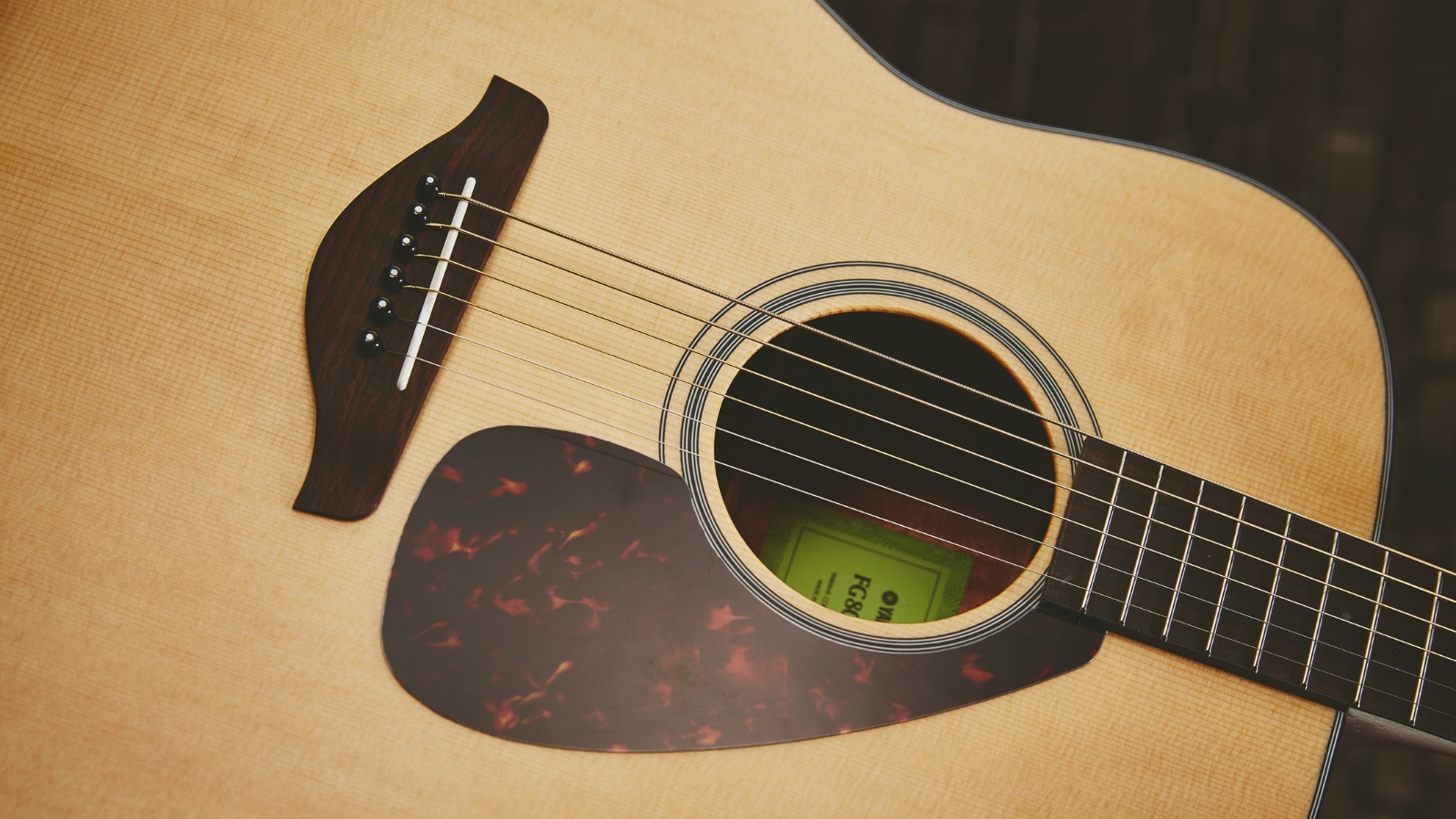
Long gone are the days when acoustic guitars with finger-shredding playability and woeful build quality were your only option at lower price points. Nowadays if you need one of the best cheap acoustic guitars to add to your collection, you can get some serious bang for your buck.
In fact, you'll have the opposite problem in the modern age of guitar, as there are so many options in the lower price brackets that you'll need to know your stuff to pick out the gems. So, to help you make the right decision, we've put together this guide with some of the biggest names in the guitar game, like Martin, Fender, and more, to give you a beautiful-sounding acoustic guitar for less.
We've included some exhaustive buying advice at the end of this guide, with common questions answered by our expert team of writers in case you're buying for the first time or just want to know more. If you’d rather get to our top choices, then keep on scrolling.
Our top picks
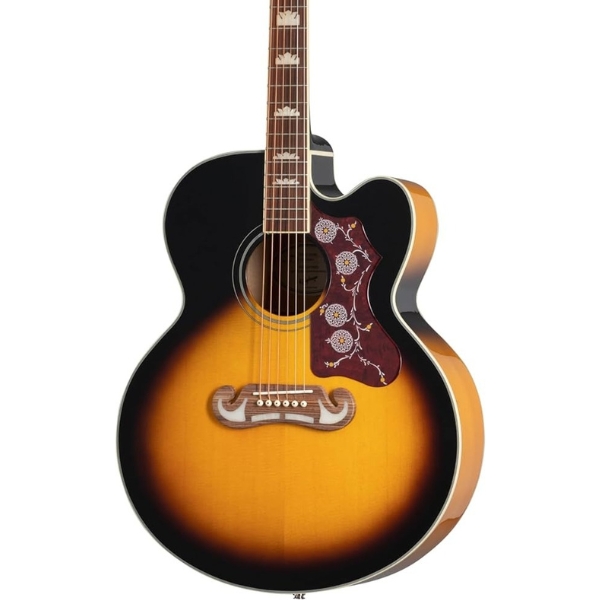
During our tests we found the acoustic voice to be exceptional. The playability was such that the J-200 EC presented severe difficulties in calling time and putting it back in the case. It sounds phenomenal particularly when strummed, delivering a solid, warm foundation in the low end and articulate highs.
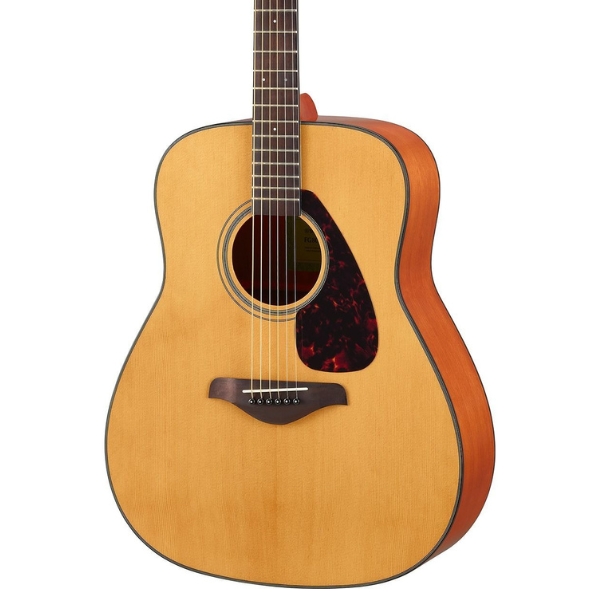
The FG800’s construction, while pretty standard, is closer to acoustic guitars costing double the price. A solid Spruce top enables the guitar to resonate wonderfully while providing a punchy and vibrant quality to the notes and chords you’re playing.
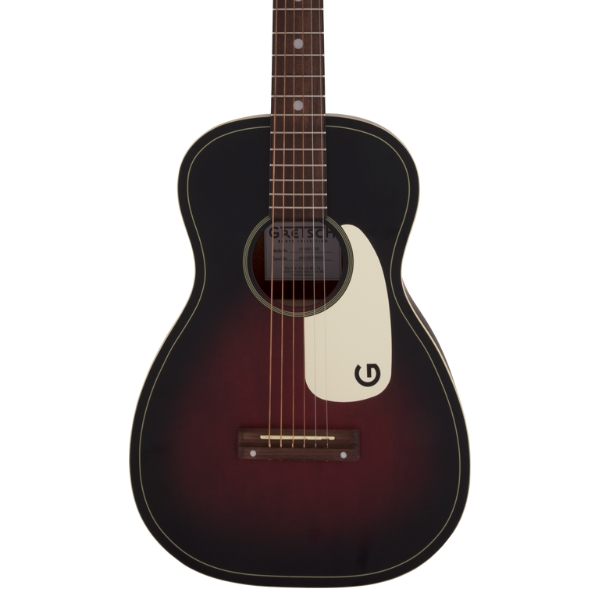
For a cheap-as-chips acoustic with heaps of vintage kudos, the Jim Dandy Flat Top from Gretsch’s Roots Series is as good an option as any. Based on the classic 1930s Rex-era acoustics, when Rex built ‘em and Gretsch shipped ‘em, this agathis-bodied Vintage Sunburst model was rolled out at Winter NAMM 2020.
Best overall
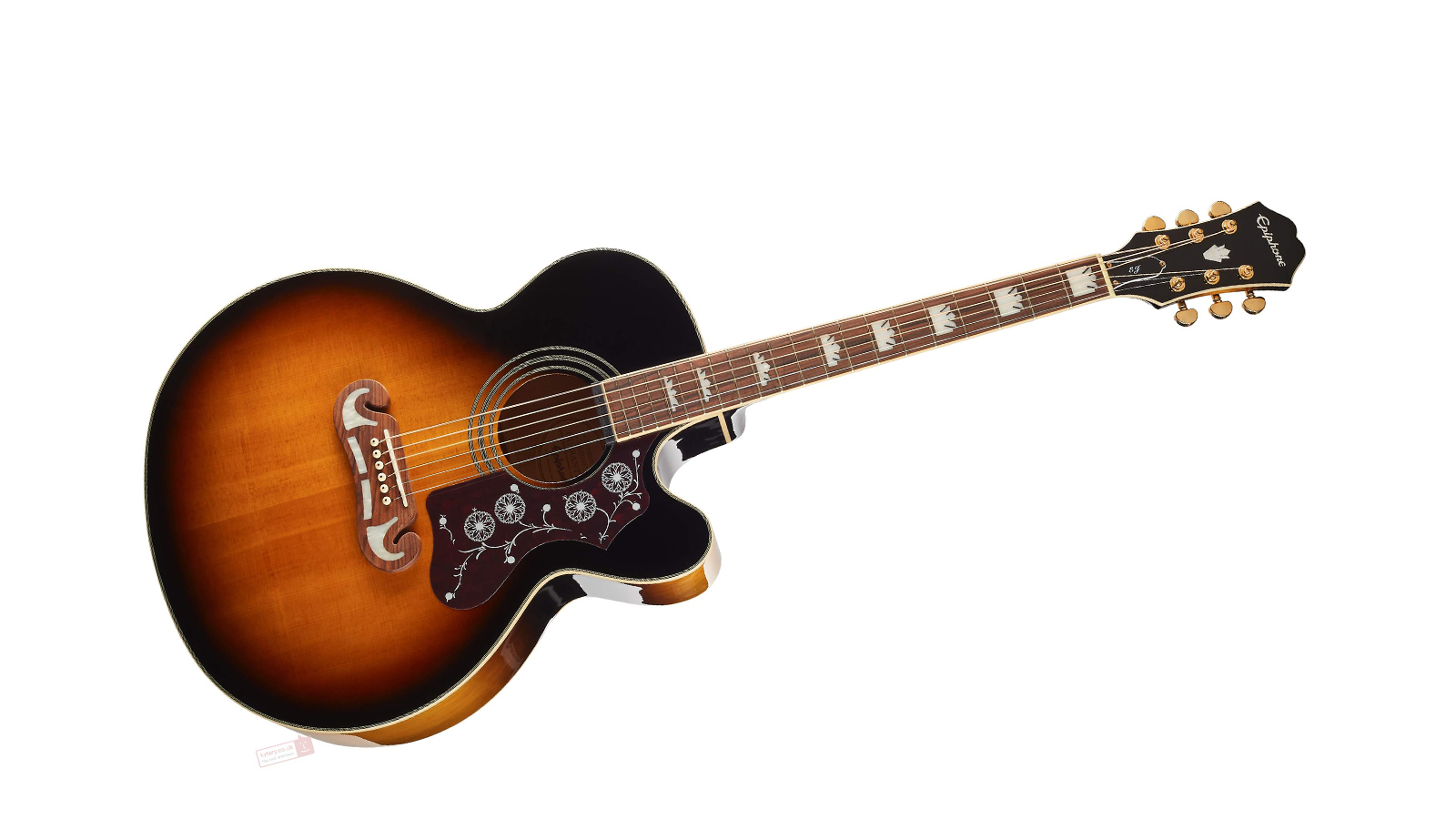
Specifications
Reasons to buy
Reasons to avoid
With a look that references Epiphone’s storied history in acoustic guitar design, the J-200 EC (formerly known as the J-200 SCE) is a premium acoustic-electric without the accompanying price tag. There is no other conclusion to be drawn. In terms of feel, tone, and looks, it is the real deal, delivering all but flawless performance, with huge jumbo tones that really fill the mix when strumming.
During our tests we found the acoustic voice to be exceptional. The playability was such that the J-200 EC presented severe difficulties in calling time and putting it back in the case. It sounds phenomenal particularly when strummed, delivering a solid, warm foundation in the low end and articulate highs.
But the Fishman Sonicore pickup and preamp system seals the deal, with an onboard tuner, and Presys preamp providing outstanding acoustic guitar tones when plugged in.
Read the full Epiphone J-200 SCE review
Best for beginners
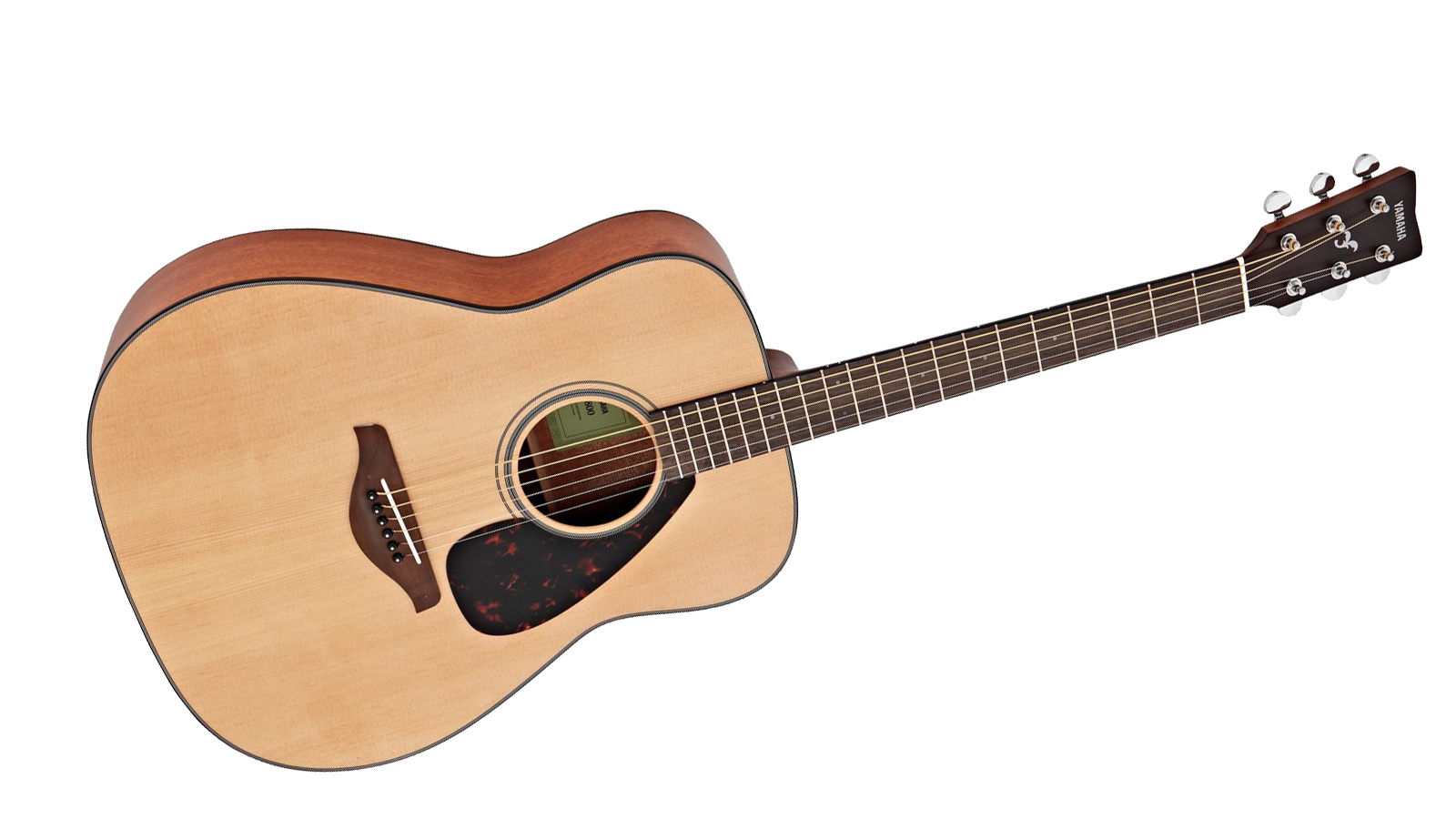
Specifications
Reasons to buy
Reasons to avoid
Yamaha has a reputation for making high-quality, well-priced products - and the FG800 is undeniable proof of that. It’s something of an icon in the world of cheap acoustic guitars, having graced the hands of many beginner and intermediate acoustic guitarists over the years.
The FG800’s construction, while pretty standard, is closer to acoustic guitars costing double the price. A solid Spruce top enables the guitar to resonate wonderfully while providing a punchy and vibrant quality to the notes and chords you’re playing.
The dreadnought body size welcomes in loads of warm low-end to round out and fatten up your tone - and while the larger body size might take some getting used to, the massive, sweet sound makes it more than worth it.
Read the full Yamaha FG800M review
Best for kids
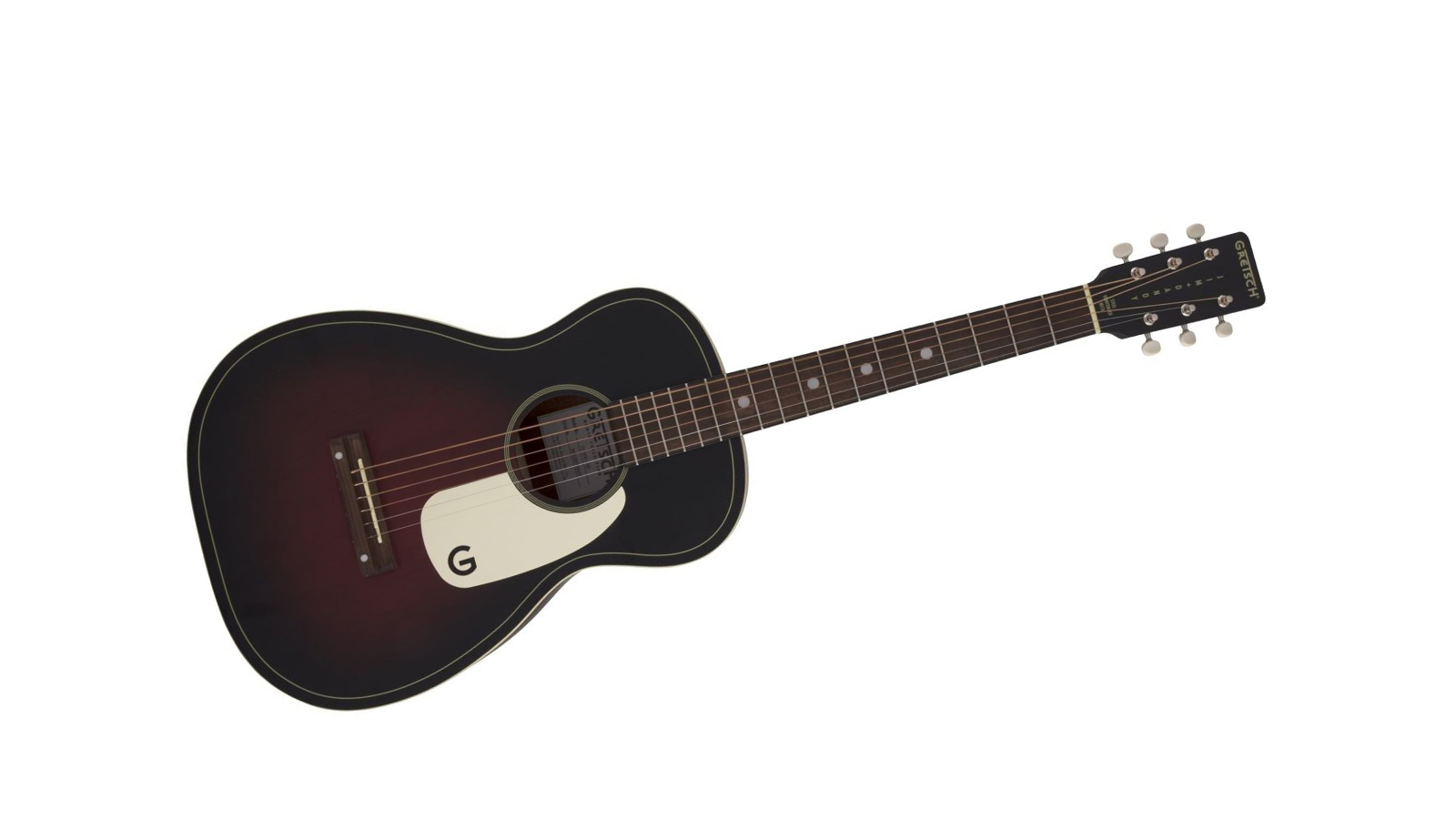
Specifications
Reasons to buy
Reasons to avoid
For a cheap-as-chips acoustic with heaps of vintage kudos, the Jim Dandy Flat Top from Gretsch’s Roots Series is as good an option as any. Based on the classic 1930s Rex-era acoustics, when Rex built ‘em and Gretsch shipped ‘em, this agathis-bodied Vintage Sunburst model was rolled out at Winter NAMM 2020.
The Agathis used for the body is related to pine but is a little more hard-wearing. Tonally, it’s somewhere between alder and mahogany. Despite its small size, it's got a hearty voice, and the note articulation is really quite good.
While you won’t mistake it for a high-end acoustic, the Jim Dandy is a compact little 12-fret acoustic with an elongated body to help it project a tone that belies the price tag.
Read the full Gretsch G9500 Jim Dandy Flat Top review
Best for small hands
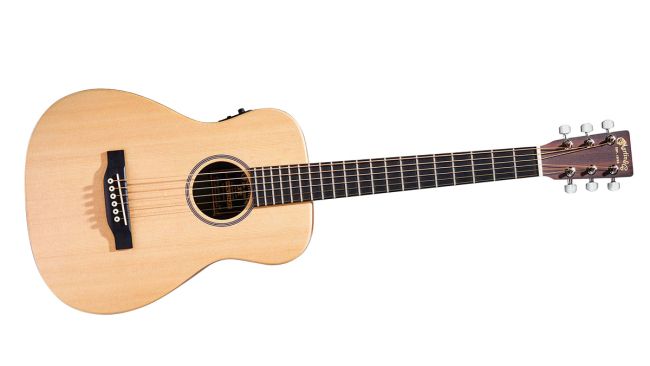
Specifications
Reasons to buy
Reasons to avoid
The Ed Sheeran-favoured Little Martin does feel a little industrial, but from the first strum, its more conventional spruce-top voice has us captivated. If you're a classic Martin fan, this is just miniaturized with a lovely crisp-edged voice. Its conventional sound perhaps leads us to traditional 'American' fingerstyle, and its pushy voice would certainly be heard above bigger guitars, both in an ensemble or a recording.
The material may be man-made, but the fingerboard and bridge look like thick ebony, while the dark-hued HPL back and sides are dark, rich mahogany with the back's central core material giving a dark binding line, which evokes a classy feel. Our Martin has only pre-set EQ, and without that engaged, things are a little middly and boxy when plugged in. It definitely sounds more conventional with the contour switch engaged, however, which cleans up the mids a little and adds some crispness.
Like its acoustic voice, the Martin sounds very 'conventional' plugged in and that's no bad thing. It's really easy to dial in: we scooped a little lower midrange and that was about it. Open-mic ready, we'd say!
Read the full Martin LX1E Little Martin review
Best with a cutaway
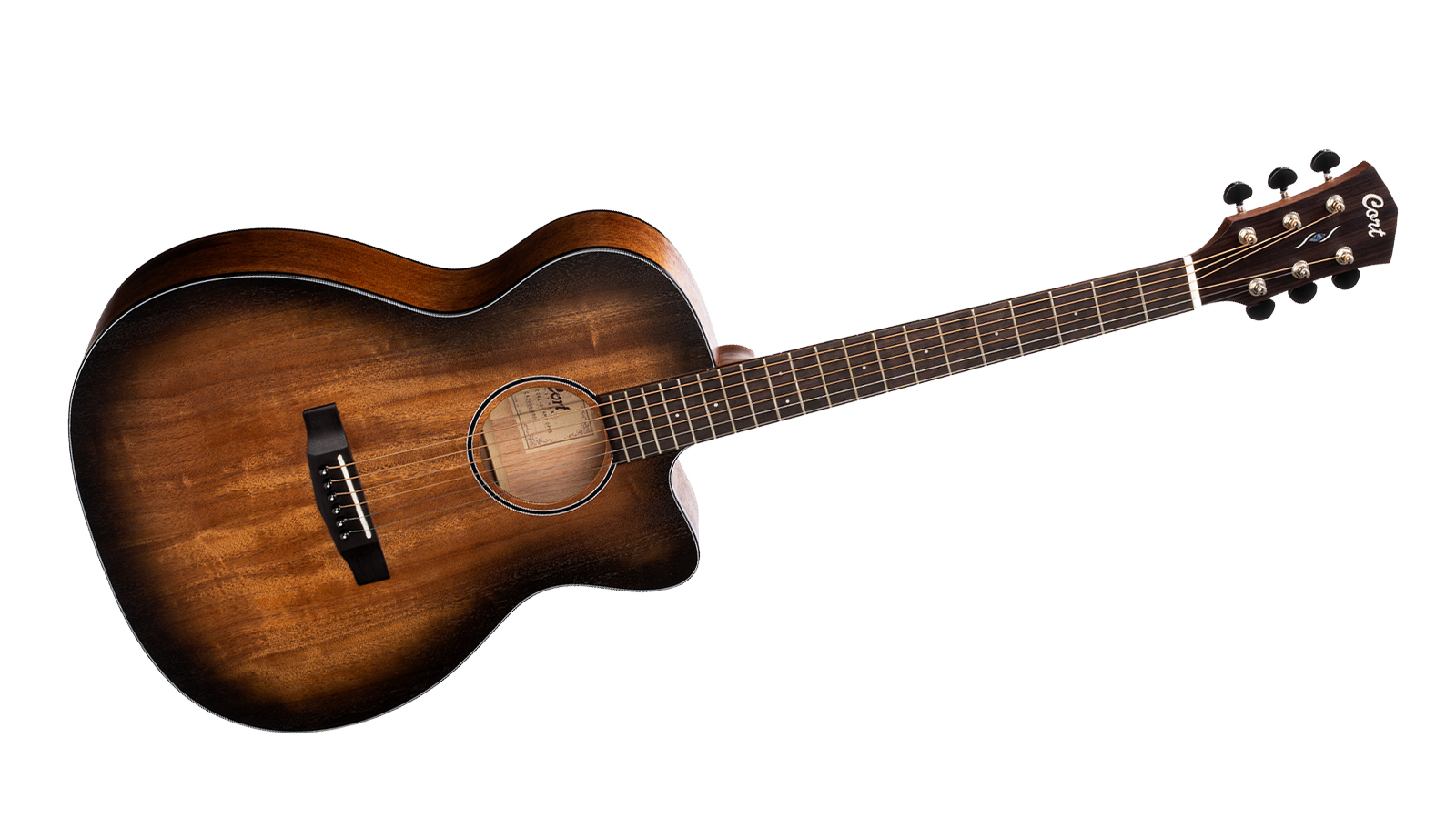
Specifications
Reasons to buy
Reasons to avoid
Cort, albeit a smaller name in the world of acoustic guitars, is producing some of the highest-quality instruments coming out of China at the moment. Cort is much more widely known for its electric and bass guitar ranges, but the Core-OC series proves that they’ve arrived, and their acoustic guitars mean business.
Like the rest of the Core-OC series, the Core-OC Mahogany possesses the OM cutaway body style. We found that this body shape and size delivers the perfect blend of tone and comfort - not quite as bulky as a dreadnought, but with a broadly similar depth of tone.
This model, as the name suggests, is constructed completely of Mahogany. This creates a warmer, more mid-focused tone than you’d find from something with a Spruce top - which we love to bits. Onboard electronics in the form of a Fishman Sonicore/Sonitone acoustic guitar pickup provide a smooth, balanced, and true-to-life representation of your tone, too - making this option from Cort even more versatile than you thought.
Read the full Cort Core-OC Series review
Best for style
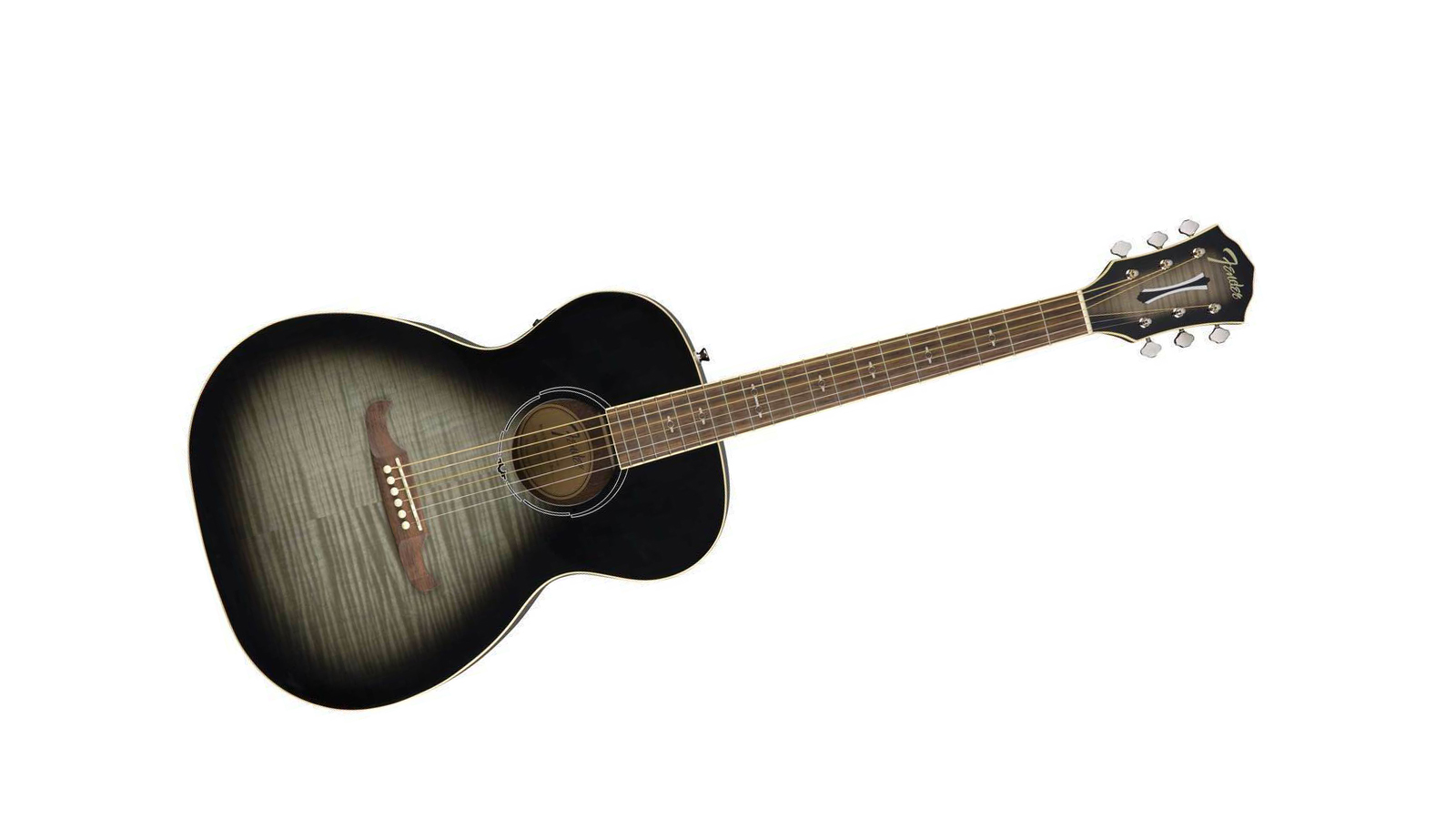
6. Fender FA-235E Concert
Our expert review:
Specifications
Reasons to buy
Reasons to avoid
This FA-235E Concert electro-acoustic will give the Epiphone jumbo a run for its money in the looks department, with a flame-maple laminate top offering an eye-popping tiger stripe that’s just on the right side of subtle to be premium without coming across as over-dressed.
It's got a really lovely sound to it, lots of warmth despite the small size, and a nice crispness in the high end. Paired with a comfortable 'C' profile neck, you get a playing platform that will suit many playing styles.
It has a laminate mahogany back and sides, too, with an Indian laurel Viking bridge. The onboard Fishman electronics have a two-band EQ and are more than adequate for gigging. And this is the thing; here you’ve got a playable, gig-ready electro-acoustic with for less than $/£350. That’s value.
Best for gigs

Specifications
Reasons to buy
Reasons to avoid
Yamaha introduced the Storia series in 2019 promising “designs that evoke the natural colors of your day.” To that end, we have got champagne gold tuners, brass-topped bridge pins, and fancy inlay on the rosette that really make you wonder what sort of day the Yamaha R&D department has.
But we have to concede that all that champagne gold and brass really does complement the all-mahogany top, back, and sides. It’s a nice departure from the light-blonde spruce and mahogany template. Heck! The neck and fretboard are walnut.
Feel-wise, the Storia II has a super-comfortable modern C-profile that’s definitely carved with the contemporary player in mind. There are no tone controls for the under-saddle piezo but that’s no big deal. Bold looks, a comfortable bevel-edged body, and an effervescent upper-midrange make the Storia a compelling new addition to the affordable acoustic market.
Read the full Yamaha Storia II review
FAQs
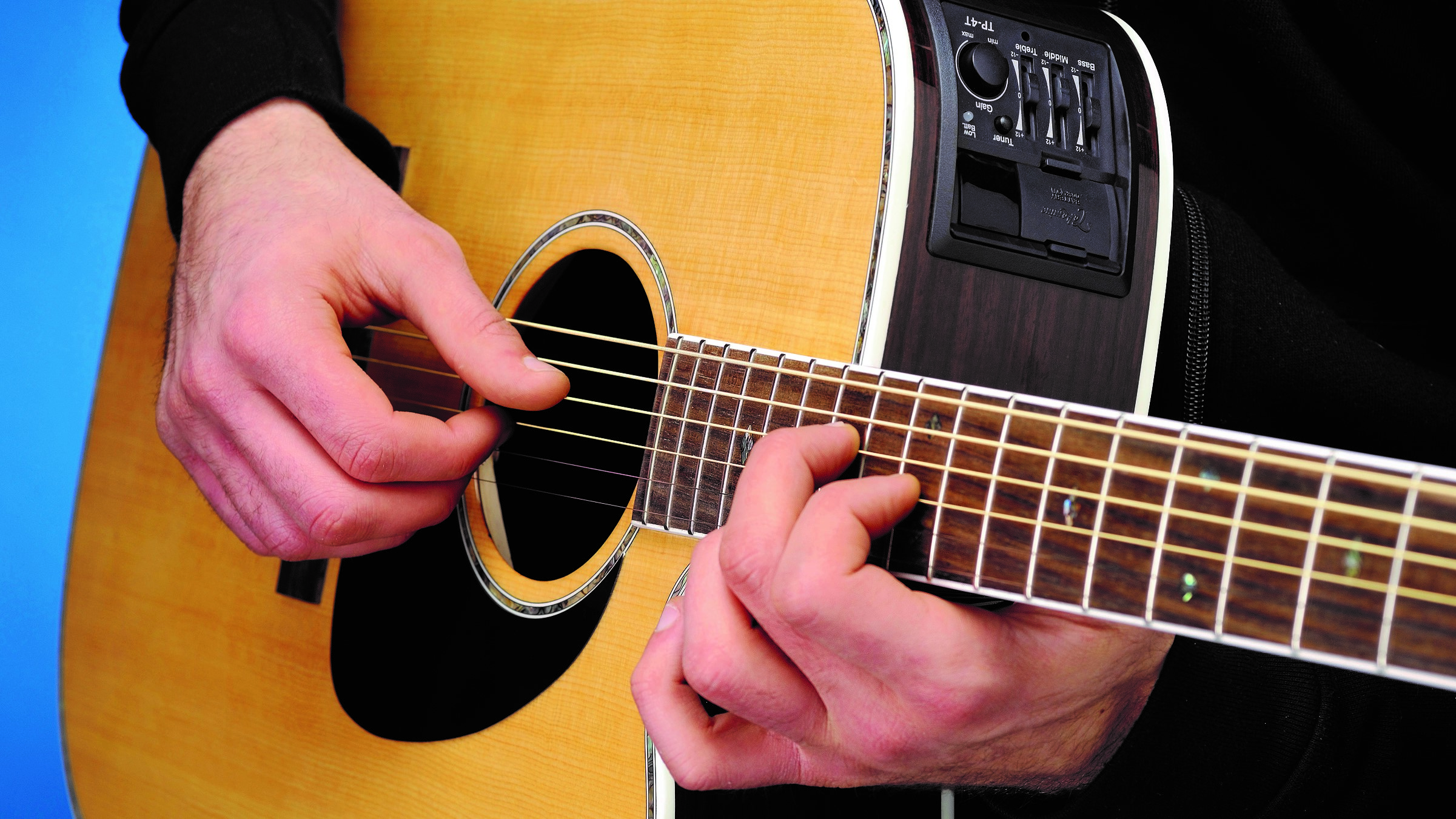
Despite the fact that you’re looking for a cheap acoustic guitar, there’s no reason to think that you’ll be settling for anything less than a stellar instrument here. However, if you’re unsure of what you might require for your personal tastes, these top tips will point you in the right direction, making certain you pick the perfect guitar.
How much do I need to spend?
All of the choices here are capped at $/£500, but you don’t need to spend that much to get a great guitar. If you want one of the legendary guitar names like Taylor or Martin on your headstock, then you’ll have to spend closer to the limit, but that doesn’t mean you can’t get something really nice for much less.
You can go as low as $/£150 and still grab something really good, with Fender, Gretsch, and Ibanez all offering models at this price point. They’re not unplayable horror shows though, in fact, they offer a surprising amount of tone, versatility, and playability.
It’s also worth paying attention to sales, b-stock products, and clearance deals from major music retailers, as you may find a high-end acoustic guitar on sale for much less. You could also save money for later if time isn’t an issue, and wait for those vast Black Friday and Amazon Prime Day discounts to arise. These kinds of tactics mean you can often double your money, getting a killer deal on an acoustic guitar.
What acoustic guitar body size should I choose?
Body size is as personal to guitar players as their taste in music. It also is one of the most important factors in determining how the guitar sounds, so it’s important to get it right.
At the top end of the size spectrum, we have jumbo and dreadnought acoustic guitars. Their large body size means they deliver the most volume, with a full voice that really captures the low end well. However, because of their size, they can also be unwieldy, especially for players with smaller dimensions. You’ll also need a big case to transport them, which makes a dreadnought or jumbo not such a good choice for the traveling guitar player.
Smaller-size guitars consist of concert, grand auditorium, parlor, or travel guitars. These come with a much smaller body size which lends them a quieter voice and different tone to that of their bigger body cousins. They’re easier to travel with and certainly much more comfortable for younger players or those with smaller hands, but they lack the power and projection of a dreadnought or jumbo-size acoustic.
At the end of the day this decision all comes down to what you want from the guitar. If you’re playing around the house, or just getting started, a smaller-sized acoustic will most likely provide an easier pathway into the instrument. If you’re a regularly gigging player, we’d say go for the dreadnought or jumbo.
How important is wood type?
Whilst there are endless debates on the characteristics of different types of acoustic guitar tonewoods, there is a definite agreement across the guitar world that a solid top wood is better than a laminated one. A laminate top is not a deal-breaker if you’re a beginner, but a solid wood top is preferred by pretty much every guitar player.
The reason most players prefer solid tops is that the wood itself is denser. This means it resonates better when you strike the strings, delivering more sustain and a richer guitar tone. The top of the guitar is where your acoustic gets the majority of its voice from, so even if the back and sides are laminated wood, you’ll still benefit massively from a solid wood top.
As with many things in the world of music, this is a matter of taste. Don’t get put off a guitar you love just because it has a laminated top! There are plenty of guitarists who prefer the sound of laminated wood, and if you’re a beginner, you aren’t likely to be able to tell the difference anyway.
Do I need electronics on my acoustic guitar?
The majority of modern acoustic guitars come with electronics already fitted. That said, if you want to get more out of your budget, you could grab a higher-end acoustic guitar minus the electronics. If you’re not planning on playing live, then you likely won’t use electronics anyway.
If you feel like you’d quite like to play an open mic night, plugging into an acoustic guitar amp or PA speakers will be necessary, and thus you’ll need electronics too. You can always fit acoustic guitar pickups at a later date, but they will nearly always end up being more expensive.
How we choose products
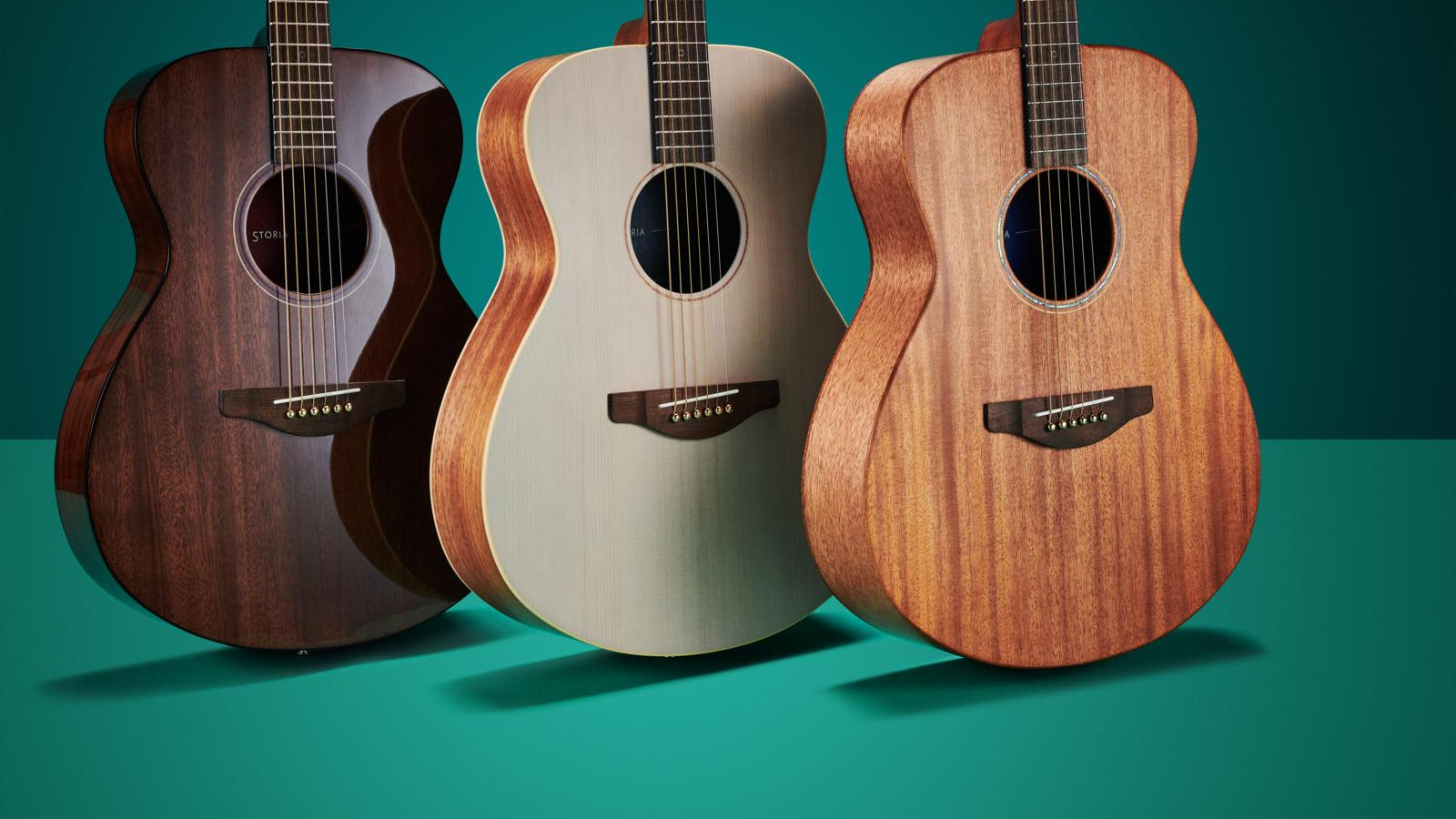
Here at MusicRadar, we are experts in our field, with many years of playing, creating and product testing between us. We live and breathe everything music gear related, and we draw on this knowledge and experience of using products in live, recording and rehearsal scenarios when selecting the products for our guides.
When choosing what we believe to be the best cheap acoustic guitars available right now, we combine our hands-on experience, user reviews and testimonies and engage in lengthy discussions with our editorial colleagues to reach a consensus about the top products in any given category.
First and foremost, we are musicians, and we want other players to find the right product for them. So we take into careful consideration everything from budget to feature set, ease of use and durability to come up with a list of what we can safely say are the best cheap acoustic guitars on the market right now.
Find out more about how we test music gear and services at MusicRadar.
Related buyers guides
MusicRadar's got your back
- The best guitars for beginners: acoustic and electric starter guitars
- On a budget? These are the best acoustic guitars under $500/£500
- The best acoustic guitars under £/$1,000
- The best acoustic guitar strings: get more from your guitar
- Buying for a child? Check out the best guitars for kids
Get the MusicRadar Newsletter
Want all the hottest music and gear news, reviews, deals, features and more, direct to your inbox? Sign up here.
Jonathan Horsley has been writing about guitars and guitar culture since 2005, playing them since 1990, and regularly contributes to MusicRadar, Total Guitar and Guitar World. He uses Jazz III nylon picks, 10s during the week, 9s at the weekend, and shamefully still struggles with rhythm figure one of Van Halen’s Panama.
- Matt McCrackenJunior Deals Writer
- James Farmer
“Beyond its beauty, the cocobolo contributes to the guitar’s overall projection and sustain”: Cort’s stunning new Gold Series acoustic is a love letter to an exotic tone wood
“Your full-scale companion. Anytime. Anywhere… the perfect companion to your full-size Martin”: Meet the Junior Series, the new small-bodied, travel-friendly acoustic range from Martin
